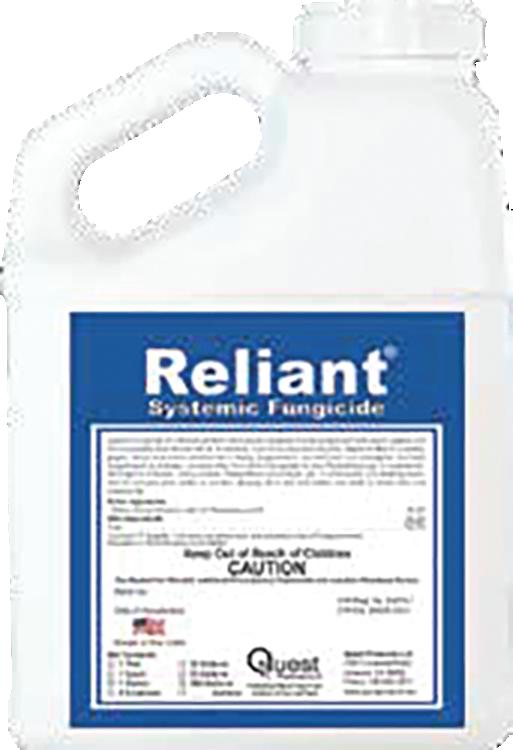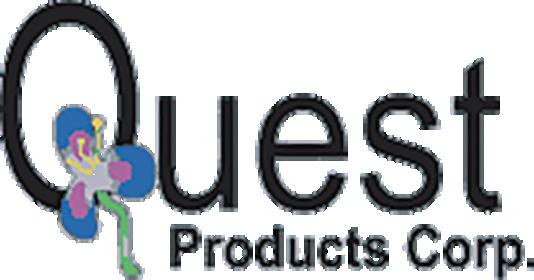






For nearly 30 years, POLYON® controlled-release fertilizer has been used with confidence for its predictable performance and labor-saving benefits. Industry proven, trusted by sports turf managers everywhere. If your goal is safe, durable and beautifully playable turf – season in and season out – no fertilizer feeds your success like POLYON® fertilizer.
Choose POLYON® fertilizer and you will get guaranteed results backed by our POLYON® Guarantee.
For more information, visit www.polyon.com or contact your Territory Manager today!



CHUCK BRAMHALL CAPE COD
cbramhall@harrells.com (508) 400-0600
JIM COHEN EASTERN MA & ME
jcohen@harrells.com (978) 337-0222
TOM LOPEZ CT tlopez@harrells.com (860) 488-2649



JIM FAVREAU
MASSACHUSETTS
jfavreau@harrells.com (978) 227-2785
MIKE KROIAN RI, MA
mkroian@harrells.com (401) 265-5353
TOM HOFFER NORTHEAST
thoffer@Harrells.com (401) 871-2916



JIM WIERZBICKI CT, RI
jwierzbicki@harrells.com (860) 424-7250
KENT LEMME
NORTHEAST
klemme@harrells.com (413) 281-8087
CONNOR CINQUE
NORTHEAST
ccinque@Harrells.com (603) 930-1861

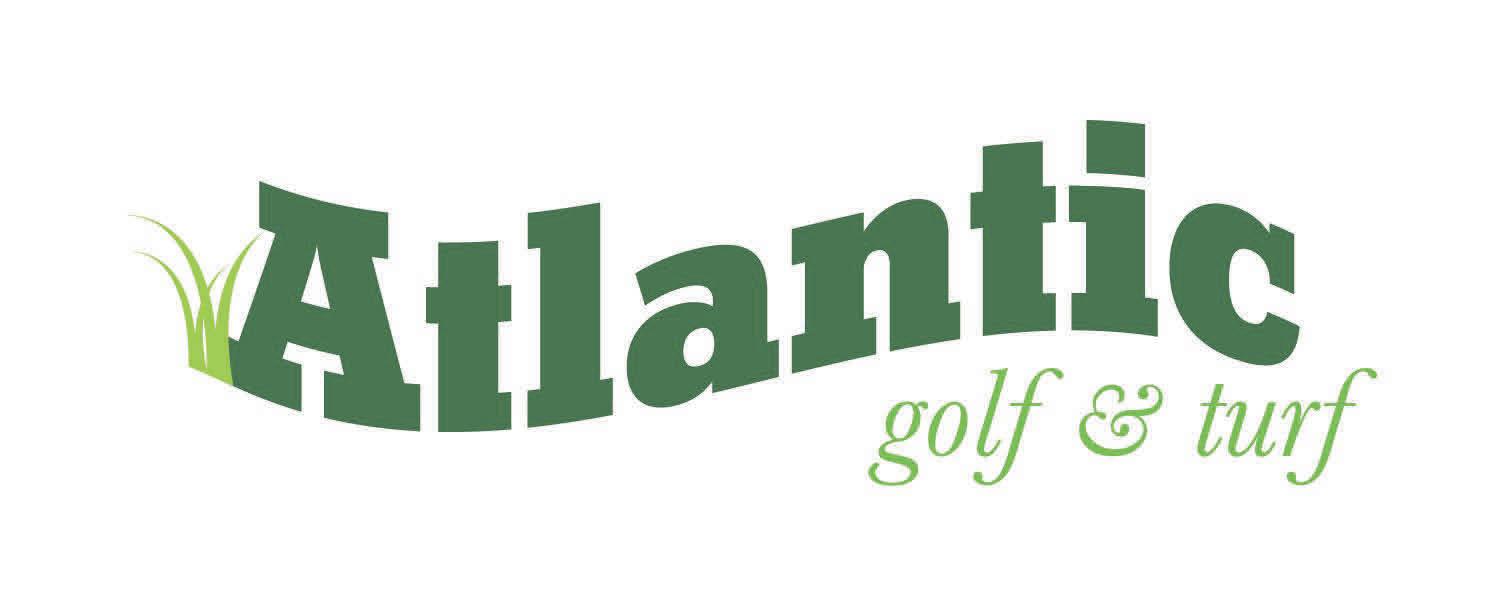



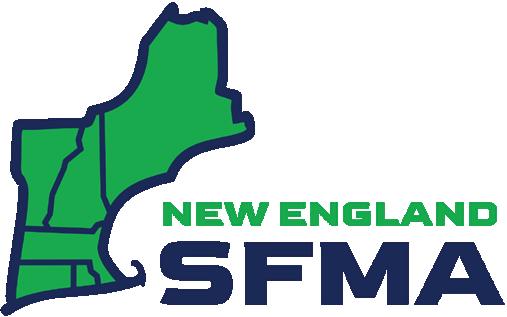
Advancing professionalism in sports turf management and athletic field safety through education, research, and scholarships.
The official publication of the New England Sports Field Managers Association (NESFMA), the New England Blade is dedicated to educating, advising, and informing members of the profession and furthering the goals of the Association. The New England Blade carries news and features related to the sports field management profession. Publisher is not responsible for unsolicited material and reserves the right to edit any article or advertisement submitted for publication and to refuse advertising not in keeping with the goals of the Association. Publisher assumes no responsibility for the validity of claims in connection with items appearing in the New England Blade. Mention of a commercial product does not imply endorsement by the New England Blade, NESFMA, or Leading Edge Communications, or preference over similar products not mentioned. The New England Blade is published quarterly. Subscriptions are complimentary to members of NESFMA. Presorted standard postage is paid at Jefferson City, MO. Printed in the U.S.A. Advertising: For display and classified advertising rates and insertions, please contact Leading Edge Communications, LLC, 206 Bridge Street, Suite 200, Franklin, TN 37064, (615) 790-3718, Fax (615) 794-4524.
Officers
President Chris McGinty Framingham Parks Department Framingham, MA
President Elect Art Goodhind Town of Natick Natick, MA
Treasurer
Andrew Carlisle, CGM Worcester Technical High School Worcester, MA
Past President Ben Polimer Town of Weston Weston, MA
Directors
Tom Barry, CSFM Greens Farms Academy Greens Farms, CT
Ryan Bjorn Gillette Stadium Foxboro, MA
Brendon Connor College of the Holy Cross Worcester, MA
Adam Ferrucci
Read Custom Soils Wareham, MA
Scott Lagana Turf Products Corp. Holden, MA
Scott Vose
Tom Irwin Advisors Burlington, MA

Board of Trustees
Kim Britton Saint Anselm College Manchester, NH
John Cunniff Walpole, MA
Victoria Wallace University of Connecticut Storrs, CT
Management Team
Virginia Wood, Executive Director
Peggy Benjamin Kristen Dreyer Charissa Sharkey
NE-SFMA Headquarters
67 West Street Medfield, MA 02052 (508) 653-1241
NE-SFMA.org
NESTMAinfo@gmail.com
Technical Editor
Victoria Wallace University of Connecticut Storrs, CT





Start earning points the day you sign up & make purchases, and continue earning all year long. With Approach you not only get double points for your purchases during the EOP period, but also the opportunity to earn single points for your in-season purchases as well!
EOP STARTS: October 1, 2024
















EOP ENDS: March 31, 2025 Earn points on purchases all year Earn points as soon as distributors report purchases

AsI prepare this last message as President of NE-SFMA, I want to share some final thoughts.
In 2010, I was invited to join this board after having served as Past President of the Massachusetts Arborist Association. Now, as I transition into the same role here with the NE-SFMA, I’m reminded of the dedication and time we all invest in our organizations to foster improvement. Together, I believe we’ve made a significant impact and created an association we can all be proud of.
Throughout my 40 years in municipal work, I’ve witnessed countless changes in our field. Advancements in research and technology have made our jobs easier and more efficient. Yet, what remains constant are the relationships we’ve built—our colleagues and friends who enrich our daily work lives. I want to express my gratitude to all our members and those who came before me, as your contributions have established a strong foundation for our organization.
As I’ve mentioned before, I encourage you to embrace the opportunities to come together, sharing support and knowledge. Continued collaboration will not only strengthen our organization but also enhance our entire industry.
I look forward to seeing many of you at our annual meeting on December 3, which will include a tour of the New Balance Track and Field facility, followed by lunch featuring Tom Carron.

I want to thank my fellow board members for putting in the time and making this organization one of the best in our industry. Thank you to our management team for the hard work they consistently put forward to make NE-SFMA the best we can be.
Lastly, I’d like to extend my heartfelt appreciation to Art Goodhind for his unwavering support, encouragement, and guidance. He will undoubtedly steer us in the right direction as we move NE-SFMA forward.

NE-SFMA President

Wishing you the very best this holiday season!






SFMA Conference: January 13 – 16, 2025
SFMA’s Annual Conference & Exhibition, “Oasis of Knowledge” will be held at the Palm Springs Convention Center in Palm Springs, CA. The annual event allows members to share information with other successful sports field professionals. In addition to educational seminars, handson workshops, and the latest technology, conference attendees tour professional, college, and municipal facilities that offer a range of insight to take back home.
Learn more at sportsfieldmanagement.org

Awards Meeting & Lunch: March 5, 2025
Mark your calendar now for NESFMA’s popular Awards Meeting and Lunch. Scheduled during the NERTC in Providence, our event will be held at 11:00 a.m. on Wednesday, March 5. Stay tuned for details on this fantastic networking event. The Awards Meeting & Lunch is complimentary for current NE-SFMA members thanks to generous support from our friends at Tom Irwin.
Who do you know that’s gone above and beyond on behalf of the sports field management industry? Which supplier has made your job easier? How about a student who could use a boost as they continue their turf management studies? Now’s your chance to give them the recognition they deserve. NE-SFMA is accepting applications for the following:
Sports Field Manager of the Year
Commercial Partner of the Year
Mruk Student Scholarship
Applications are available online at NESFMA.org. The deadline for submission is December 15. Presentations are made at NE-SFMA’s Awards Meeting and Lunch at the NERTC on March 5 in Providence, RI.
Many thanks to those who have already renewed their NE-SFMA membership for 2025.
Renewal is quick and easy online at NESFMA.org/Renew25 . With all the opportunities planned for NE-SFMA members this year, you don’t want to miss a minute.
Calling all Speakers & Contributors!








Do you have a passion project, a deeprooted interest, or a new turf care technique you’d like to share with your fellow members? NE-SFMA is looking for enthusiastic experts. Our education committee is on the lookout for innovative presenters to instruct and inspire sports field managers. If you’re interested in sharing your knowledge and expertise (either at the podium or through this magazine), we’d like to hear from you. Contact NE-SFMA Office with your ideas.
Please plan now to attend this important membership meeting! We’ll start with an exclusive tour of New Balance’s state-of-the-art Track and Field Facility in Boston, followed by our annual meeting and lunch at the nearby Stockyard Restaurant. Our special guest is New England’s favorite TV sports personality, Tom Caron. Tom’s presentation, “The Golden Era of New England Sports: The Role Teamwork Played in Making it all Happen”, promises to be a highlight of the annual event.
Tom Caron is the host for NESN’s Boston Red Sox coverage. He hosts the network’s two, half-hour pre-game shows, “Red Sox First Pitch” and “Red Sox Gameday LIVE”, and following the game, “Red Sox Extra Innings LIVE” as well as “Red Sox Final.” Caron also serves as the play-by-play announcer for NESN’s Hockey East telecasts. Caron has won three New England Emmy Awards, a New York State Broadcasters Award, two James Ellery Awards (for excellence in covering the American Hockey League) and the ECAC Media Award.
In 2014, he was inducted into the Portland Pirates Hall of Fame. The multi-talented sports media talent joined NESN in 1995 as co-host of “Front Row”, a nightly sports magazine program. In polls conducted by Charter Media and Market Research, Caron was named New England’s favorite TV sports personality for the fourth consecutive year.


NE-SFMA’s Nominating Committee is finalizing the Slate of Officers and Directors for 2025. Please watch your email for electronic ballot in late November.
October 23, 2024, NE-SFMA members from across the region gathered for an exceptional day of learning, tours, and demonstrations. A standout moment of the event was the keynote presentation by Dr. John Sorochan, Distinguished Professor of Turfgrass Science and Management at the University of Tennessee. Dr. Sorochan shared insights into the monumental efforts of his team at UT, in partnership with Michigan State University, as they prepare for the 2026 World Cup in North America. These initiatives promise to significantly enhance sports fields and improve athlete safety for years to come.
Brendon Connor, Superintendent of Grounds, and Chase Ferguson, Assistant Director of Athletics, Operations, and Championships, led informative tours of the impressive Holy Cross athletic facilities. Attendees also watched Scott Vose from Tom Irwin Advisors demonstrate cutting-edge field-testing equipment and techniques.
Here are some key takeaways shared by NE-SFMA members:
• Hybrid Systems Insights: “I gained valuable knowledge about different hybrid grass and artificial turf systems, including seeding methods and turf fiber stitching into existing sod. Such systems could become more prevalent for high-performance athletic fields.”
• Athlete Safety Focus: “John’s presentation, while aimed at professional sports, highlighted the importance of athlete safety across all levels. We must remain vigilant about the needs of every athlete.”
• Dynamic Safety Factors: “I learned that athlete safety encompasses more than just head injury criteria; factors like footwear and cleat patterns also play a crucial role.”
• Soil Moisture Awareness: “I was impressed by the evolving understanding of soil moisture and its impact on field playability.”
• FIFA’s Contributions: “FIFA’s commitment to funding research for the World Cup is noteworthy. The findings will benefit our industry at all levels and leave a legacy.”
• Measurement Tools: “The demonstration of various objective measuring tools for analyzing sports field performance was eyeopening. These tools can guide our cultural programs as well as selling a need for a more robust program to decision-makers.”
Thank you to our hosts, speakers, sponsors, attendees, and volunteers. The event was a remarkable success, filled with cuttingedge information and valuable networking opportunities. •








March 4 – 6, 2025
Providence, Rhode Island
NE-SFMA, in collaboration with the New England Turfgrass Foundation, is proud to help produce the annual New England Regional Turfgrass Conference (NERTC) from March 4 to 6, 2025, in Providence, Rhode Island. This premier event brings together top innovators, practitioners, and scientists in the turfgrass industry.
The education committee has dedicated months to curating exceptional educational programs tailored to the unique challenges faced by sports field managers in New England. This year’s conference sessions cover a broad spectrum of relevant topics, including:
• Overseeding + Traffic Stress Management
• Talking About Pesticides
• Nutritional Management and It’s Costs on Sports Fields
• Processing Weather Warnings: Protecting your Spectators and Players
We are excited to introduce a pre-conference seminar on Tuesday, March 4, exclusively focused on Synthetic Turf Management. This session promises to provide invaluable insights and practical strategies for managing synthetic surfaces effectively.
The expo hall has been expanded and will feature an array of the latest equipment, technology, and trends designed to enhance your daily operations. Attendees can look forward to special receptions, networking lunches, and the NE-SFMA Awards Meeting on Wednesday at 11:00 a.m., creating ample opportunities to connect with colleagues and industry leaders.
A heartfelt thank you to NE-SFMA’s representatives on the NERTF board: Mike Buras, CSFM, Ben Polimer, and education advisor Mary Owen. Your dedication to advancing sports field research and education is deeply appreciated.
All proceeds from the conference support the mission of the New England Regional Turfgrass Foundation, which has recently surpassed $2.5 million in funding for turfgrass research. For more details about the NERTC, please visit nertf.org





Blackstone Valley Vocational School District
Upton, Massachusetts


How did you get your start in the sports turf industry?
After relocating to the Worcester, MA area, I was seeking a career shift that would allow me to continue working outdoors. I came across a position at Shrewsbury Landscapes, Inc. which I initially assumed was focused on traditional landscaping. However, it was there that I was introduced to the fascinating and specialized world of sports turf management, sparking a passion that ultimately defined my new professional path.
Where did you go from there?
I began my journey in the sports turf industry as a laborer, quickly discovering a deep passion for turf management. The industry’s parallels with my previous work in agriculture became clear, and I immersed myself in learning from experienced professionals—whether it was golf course superintendents, subcontractors, or grounds managers. Eager to advance, I pursued an online certificate from The Ohio State University and obtained my Pesticide License.
After eight years in the field and rising to the role of operations manager, I sought a position that offered a better balance between my career and growing family. That opportunity came with Blackstone Valley Regional Vocational Technical High School (BVT), where I now serve as Sports Field Specialist. With BVT’s sports teams competing at a highly competitive level, my role is to elevate the quality of their athletic fields. Since joining the team in June, we’ve made significant progress, though there’s still more to accomplish.
Who has been your mentor in the sports field industry?
Many of my mentors in the sports turf industry may not even realize the impact they’ve had on me. One such mentor is Ron Dobosz, who connected with me on Facebook through a mutual groundskeepers group. Coincidentally, we are both alumni of the same high school, and I naturally gravitated toward his posts, observing how effortlessly he manages his town’s fields. This past summer, I decided to paint our goal posts for the first time and reached out to Ron for guidance. He walked me through the process, and thanks to his help, the project went seamlessly.

Another early influence was Ed Olsen from the town of Needham, MA. During my time as a contractor there, I had the opportunity to work closely with Ed. He taught me that paying attention to even the smallest details can make a significant difference in the quality of the work. Both individuals played key roles in shaping my approach to the sports field industry.
What’s the best business advice you’ve ever received?
Continuously invest in both your knowledge and your network. Turf management is an ever-evolving field, with advancements in technology, sustainability practices, and product innovation. Staying up to date through certifications, workshops, and industry conferences will ensure you’re ahead of the curve. Equally important is building strong relationships with peers, suppliers, and clients—collaboration and open communication are key to solving challenges efficiently and fostering longterm success. Finally, always prioritize attention to detail; the quality of your work speaks volumes and can set you apart in a competitive industry.


What’s your favorite thing about your current position?
The atmosphere at the school is truly incredible. I have a lot of ideas, but none of them could come to life without the strong support system around me. Whether it’s collaborating with the Paint and Design Studio to create custom logos and stencils or working with the Construction Technology Shop to repurpose old gym mats for a padded wall on the baseball field, there’s a real sense of teamwork. The administration is also fully supportive, ensuring I have the resources needed to succeed. It’s this collaborative environment that has enabled me to achieve so much in such a short time.
Is there a recent project that you have been able to complete/implement?
While we haven’t completed many large-scale projects, we’ve focused on several smaller initiatives to enhance the school’s overall appearance. For example, we repainted the goal posts, and the students designed new flags featuring our school colors and name to fly from the uprights. We also created stencils to display the school’s name and a breast cancer awareness ribbon for October. Currently, I’m working on expanding the football field’s irrigation system to include the softball field, as well as installing a new well to provide irrigation for both the baseball and field hockey fields.
What is the next “game-changer” you see on the horizon for the sports field industry?
A game-changer for the sports turf industry is the increasing integration of technology and data-driven solutions. Innovations like GPS-guided equipment, automated irrigation systems, and sensors that monitor soil health, moisture, and weather conditions are revolutionizing turf management. These tools allow for more precise and efficient maintenance, optimizing resource use while enhancing turf quality and sustainability. Additionally, the shift toward environmentally friendly practices, such as organic fertilizers and water conservation techniques, is becoming crucial as sustainability takes center stage. Embracing these advancements will be key to staying competitive and meeting the growing demand for high-performance, ecoconscious sports fields
What advice would you give to people starting out in sports turf management today?
Pay close attention to the details. In my experience, people are more likely to notice the small things before the larger aspects. When they see you taking care of the field or facility, they are more inclined to treat it with respect. Additionally, don’t hesitate to ask questions or seek guidance; there’s no shame in wanting to learn. Surround yourself with a supportive team that includes industry experts, sales representatives, administrators, coaches, and athletes. Their insights and perspectives are invaluable to your success
Please tell us a bit about your family life and what you enjoy doing in your free time.
My wife, Katie, our daughter, Quinn, and I love embarking on day trips to explore beautiful destinations, such as the coast of Maine and the beaches of Cape Cod. I also enjoy watching sports, whether it’s on television or in person. However, after working in the sports field industry, I find myself more focused on the details, such as the fonts used for field numbers or contemplating how I might implement specific mowing patterns on my fields.
What have you found most beneficial about being a NE-SFMA member?
I have greatly appreciated the support system that NE-SFMA provides, which allows me to exchange ideas and gain valuable insights. This network instills the confidence to explore new initiatives that I might have previously thought were beyond my reach.

Is there anything else you’d like to share with your fellow NE-SFMA members?
I am truly honored to be recognized in this article, and I want to express my gratitude to the NE-SFMA community for their continued support. I eagerly anticipate the opportunity to learn from each of you, share my own experiences, and contribute to our collective knowledge. I believe that our industry thrives on collaboration, and I look forward to exchanging insights, sharing laughs, and telling stories that inspire us all. Together, we can continue to elevate the standards of sports turf management and foster a vibrant community. •














By Blake Dinius, Entomologist, Plymouth County, Massachusetts
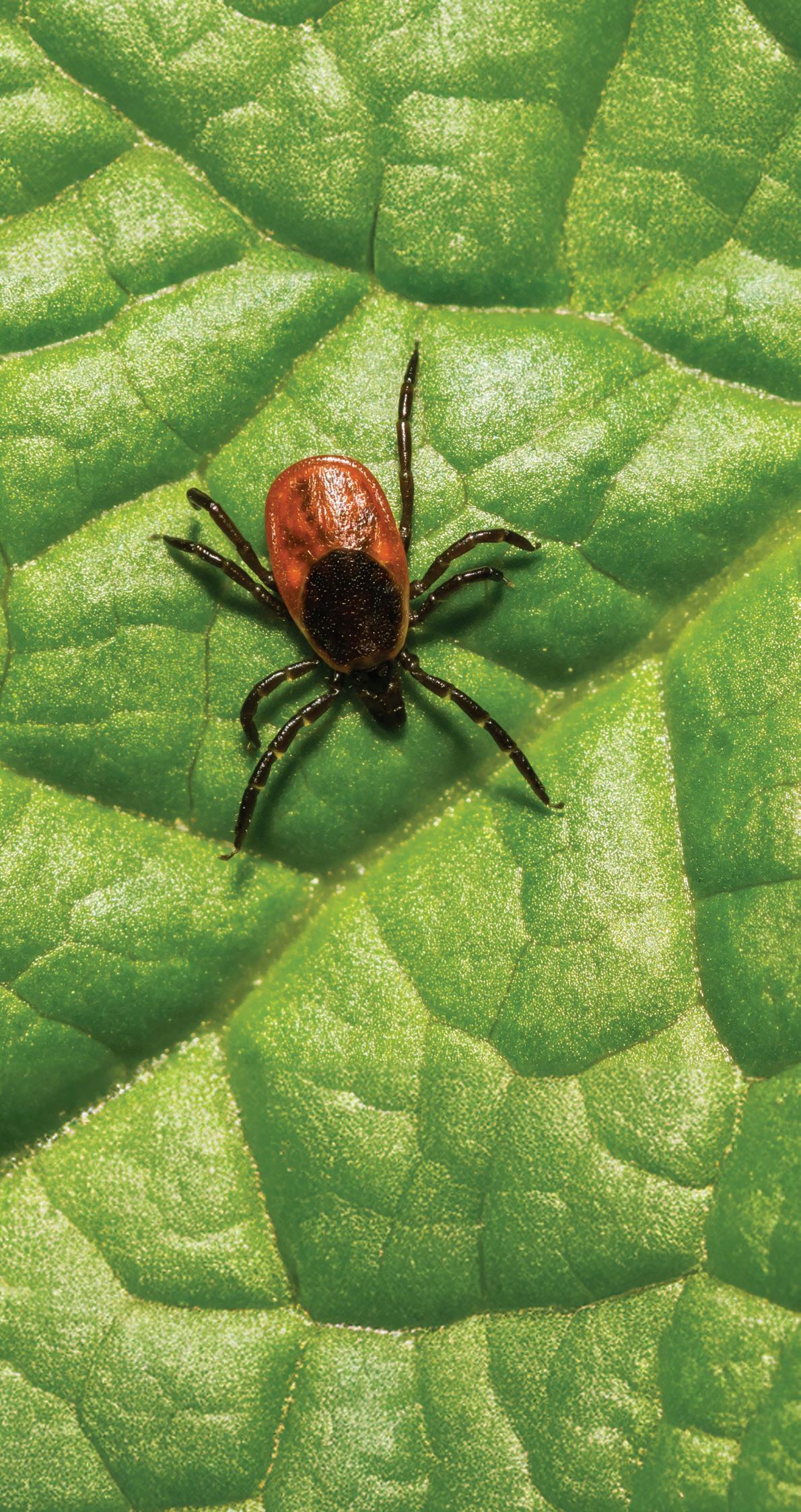
Being cool for millennia.
Deer ticks (Ixodes scapularis) have been surviving cold winters for thousands of years. One study estimates expansion into New Jersey around 50,000 years ago. With the northernmost population having survived the glacial maximum along the Mid-Atlantic region, they expanded outward into the Northeast. Winters up here are nothing new to them.
Winter: Just a part of life.
Deer ticks undergo a two-year life cycle from egg to adult. This means thriving in cold weather is just part of their natural development. Every spring, eggs are laid. These eggs hatch into larval ticks, which are active during the summer months. After feeding once on a small animal, these larvae molt into nymphs.
These nymphal ticks will not feed for another eight months or so. Instead, most will survive their first winter as unfed nymphs. Nymph emergence peaks around May and June. However, it’s not uncommon to find them much earlier. Significantly, nymphs pose the greatest risk to humans, being both small and capable of spreading many diseases. Like larvae, they will feed once before molting and will not feed again for several months.
The adult stage is the final stage. Adults become active in the fall of that year. They remain active into the following spring. This means this is the second time ticks will experience winter conditions. Unlike the nymphs, adults are active and searching for a large mammal. Generally, this means they are looking for deer, but a human, cat, or dog will suffice.
Any time temperatures are above 32°F, deer ticks can be active. However, they are a bit sluggish until you get around 40°F and up.
The cold never bothered them anyway.
Deer ticks have several adaptations and behaviors they use to tolerate cold temperatures. They synthesize an antifreeze compound called glycerol. Glycerol lowers the temperature at which water inside the tick freezes. This mitigates lethal cold injury, even as ponds and lakes freeze over. Interestingly, Borrelia burgdoferi, the bacteria responsible for Lyme disease, is thought to use glycerol as a carbohydrate source for survival.
Deer ticks aren’t impervious to cold temperatures, though. If exposed to ~10-14°F or lower for a sustained period, they can die.
But ticks have another trick up their sleeves. They will burrow under leaves and snow. Surprisingly, leaf and snow cover work very well as insulation. Don’t go by what the weather forecast says, you would need to know the local temperature underneath everything to see how ticks are impacted. Even if air temperatures drop to well below zero, temperatures could easily remain in the 20s underneath leaves and snow. I would not expect that last cold spell to impact anything you do to prevent tick bites. Additionally, some data shared at the Annual Meeting of the Society of Integrative and Comparative Biology suggests that deer ticks infected with Borrelia burgdoferi could be more resilient to winter temperatures.
Don’t adjust your thinking about ticks based on the weather!
Treat this time of year like any other time of year.
• Apply tick and flea prevention.
• Perform tick checks after going outside.
• Check your pets for ticks after they come indoors.
• Be cautious around piled leaves along yard edges and alongside trails.
• Clear away snow and leaves from your yard.
• Compromise: If looking to promote habitat by “leaving the leaves,” only clear leaves from the parts of your yard you expect to use often. •


• De-compaction of Infill
• Deep Grooming
• Rejuvenation
• Magnetic Sweep
• Vacuuming
• Surface Cleaning
• Rotary Brushing
• Add Infill
• Seam Repair
• G-Max Testing



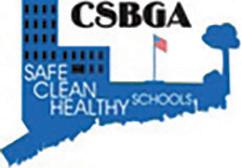
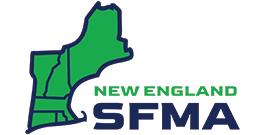
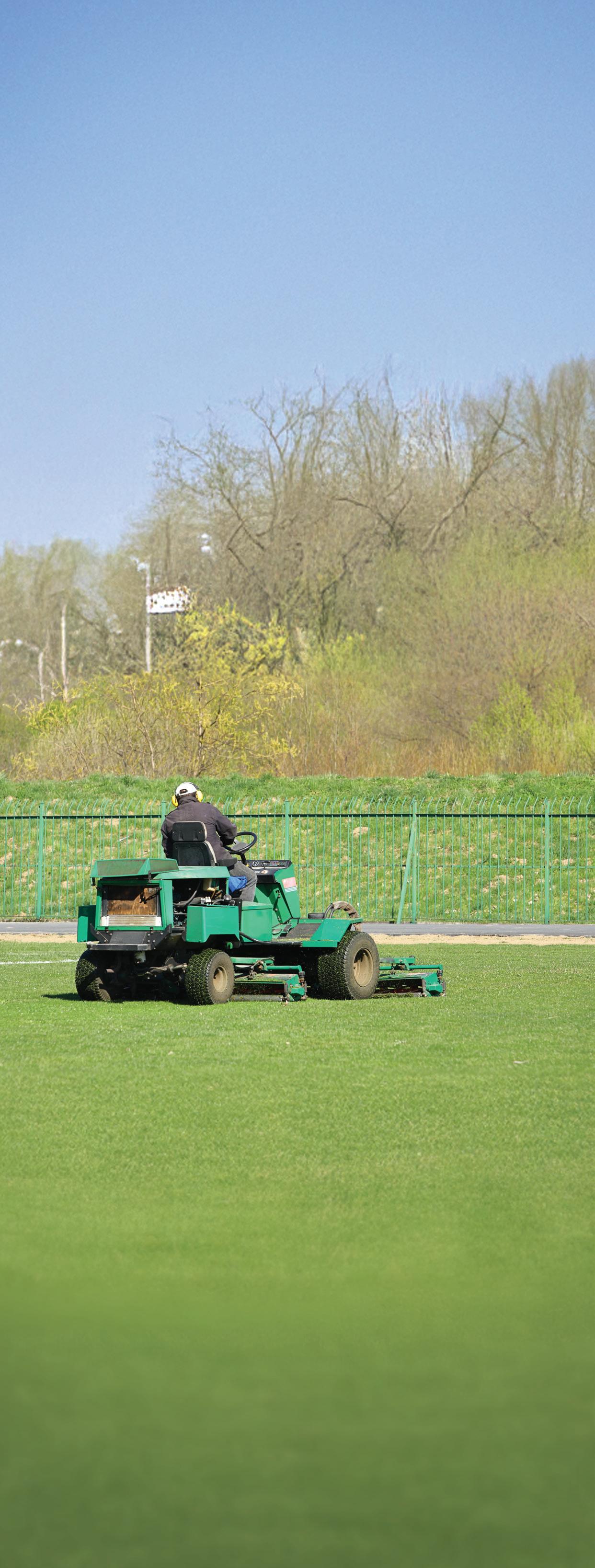
owing is the most basic and perhaps the most important cultural practice of managed natural grass systems. Mowing practices impact turfgrass quality and playability, as well as turfgrass density, texture, root development, and wear tolerance. Failure to mow properly results in weakened plants with poor density and quality, resulting in fields that offer poor play and can be unsafe.
An appropriate mowing protocol is determined based on the intended use of the site, the sport, the cultivar being managed, and the maintenance program. Other factors that influence the mowing program, such as mowing frequency, include the height of the cut (HOC), equipment, time of year, root growth, and abiotic and biotic stress.
Mowing influences shoot density, tillering, lateral growth of rhizomes and stolons, and root growth. Mowing practices must balance these physiological responses, enabling quick turfgrass recovery through decisions related to HOC, frequency, and mowing patterns. Frequent mowing increases tillering and shoot density but can decrease lateral stem and root growth if done improperly. Infrequent mowing may cause the removal of too much of the plant at one time, which can deplete the plant’s food reserves and lead to scalping injury. Proper equipment maintenance is also key to maintaining healthy turfgrass, as cutting units require sharp blades and consistent reel-to-bedknife (light) contact to reduce the risk of creating wounds that can favor microbial infection and dissemination of pathogens.
Mowing heights vary based on several factors:
• Turfgrass species and cultivar
• Grass growth rate at a particular time of year
• Sport being played
• Mowing equipment
• Available labor/budget
The one-third guideline (do not remove more than one-third of the leaf blade at one mowing event) applies to most situations to balance root and shoot system development. This still allows for variation in the HOC, depending upon the species and season, providing the sports field manager opportunities to optimize turfgrass health and playing quality.
Frequent mowing at the lower range of acceptable HOCs for a species during periods of optimal turfgrass growth increases the rates of lateral growth from rhizomes and stolons and encourages tillering of bunch-type grasses without being a drain on nutrient acquisition and root production. Frequent mowing at the lowest HOC ranges for a species during environmental stress periods gradually weakens plant health, as shoot development is favored, compromising root growth and carbohydrate storage. Mowing too infrequently typically leads to a scalping event, which leaves excess clippings on the surface (creating shade, disease, and playability problems) and further depletes carbohydrate reserves of the plants, as recovery efforts are focused on regenerating shoots. Eventually, the playing surface may be deemed unfit for use. •
Reprinted from SFMA’s Knowledge Center: Cultural Practices








By Arthur Eddy, ASLA, LEED AP
ynthetic turf fields have become an integral part of the landscape for schools, sports complexes, and municipalities across New England. They offer a safe, durable, and versatile playing surface that accommodates a wide range of athletic activities. However, like any significant investment, these fields require dedicated maintenance to ensure their longevity and performance. Understanding the distinction between preventative maintenance and reactive maintenance is crucial for facility managers looking to preserve the quality and safety of synthetic turf fields.
Preventative maintenance is a proactive approach focused on keeping synthetic turf fields in optimal condition by addressing potential issues before they escalate. This strategy emphasizes regular inspections, cleaning, and upkeep to mitigate wear and tear. By prioritizing preventative measures, facility managers can ensure their fields remain safe and playable for athletes of all ages and skill levels.
1. Action Plan Development: A successful maintenance program begins with a comprehensive action plan tailored to the unique needs of each field. This plan should consider factors such as the type of turf, frequency of use, and environmental conditions. By establishing clear guidelines and schedules, facility managers can ensure that maintenance tasks are performed consistently and effectively.
2. Regular Inspections: Routine inspections are vital for identifying early signs of damage. During these checks, facility managers should look for issues such as infill displacement, seam separation, and surface wear. Early detection allows for timely repairs, which can prevent costly replacements and extend the life of the turf. Inspections should be conducted at least biannually, but more frequent assessments may be necessary depending on usage levels and environmental factors.

3. Scheduled Cleaning: Maintaining a clean field is essential for both aesthetics and performance. Regular cleaning removes debris, contaminants, and organic matter that can compromise the integrity of the turf. Facility managers should implement a cleaning schedule that includes tasks such as raking, vacuuming, and power washing, ensuring the field remains in top condition throughout the playing season.
4. Infill Management: Proper infill levels are crucial for cushioning, stability, and performance. Over time, infill can become uneven due to foot traffic and weather conditions. Regular top-ups and redistribution help maintain consistent infill levels, preventing uneven surfaces that can lead to injuries. Monitoring infill depth should be a routine part of field inspections, and adjustments should be made as needed.
5. Surface Grooming: Grooming the turf on a regular basis is vital for maintaining the uprightness of the fibers. This prevents matting and ensures uniform playability. Facility managers should use specialized grooming equipment to achieve the best results, allowing for optimal performance during games and practices.
Incorporating technology into maintenance practices can significantly enhance efficiency and effectiveness. Many facilities are now utilizing data analytics and reporting tools to track field conditions and maintenance history. This information can inform decision-making and help managers allocate resources more effectively.
One innovative approach is the use of sensors that monitor various aspects of the turf, such as temperature, moisture levels, and usage patterns. By analyzing this data, facility managers can make informed decisions about when to conduct maintenance tasks, ensuring the field is always in prime condition.

Annual Health Surveys are another valuable tool for facility managers. These surveys provide a comprehensive assessment of turf conditions and identify specific maintenance needs. By compiling data from multiple surveys, managers can develop long-term maintenance plans that are both proactive and costeffective. This not only aids in immediate upkeep but also assists in budgeting for future maintenance needs.
Reactive maintenance is a strategy that addresses problems only after they arise. While this approach may seem cost-effective in the short term, it often leads to more significant issues and higher costs in the long run.
• Increased Costs: Delaying maintenance can result in extensive repairs or even field replacement. Reactive maintenance often leads to emergencies that demand immediate attention, which can be significantly more expensive than routine upkeep.
• Safety Hazards: Postponing maintenance can compromise player safety. Issues such as uneven surfaces, exposed seams, or contaminated areas can lead to injuries, which can have legal and financial repercussions for facilities.
• Downtime: Fields requiring reactive maintenance may be out of service for extended periods, disrupting schedules for games and practices. This not only impacts athletes but can also lead to dissatisfaction among coaches and parents.
• Diminished Performance: Neglected maintenance can degrade field performance, adversely affecting the playing experience. Poorly maintained fields can impact athletes’ skills and enjoyment, potentially discouraging participation in sports.
Investing in regular preventative maintenance is crucial for extending the life of synthetic turf, reducing long-term costs, and ensuring a safe playing environment. A well-executed preventative maintenance program not only preserves the field’s appearance and functionality but also fosters confidence among facility managers, coaches, athletes, and the community.
By prioritizing preventative strategies, facility managers can protect their investments and enhance the overall experience for everyone using synthetic turf fields. A comprehensive maintenance plan that aligns with the specific needs of the field will ensure it remains in peak condition for years to come.
The choice between preventative and reactive maintenance is clear. As the landscape of sports and recreation continues to evolve, it is essential for facility managers to embrace proactive strategies that safeguard their turf investments. Ongoing education and collaboration within the industry are vital for staying informed about best practices and emerging technologies.
By committing to a proactive maintenance approach, stakeholders can ensure that synthetic turf fields not only meet current demands but also adapt to future challenges. This dedication will ultimately create safer, more enjoyable environments for athletes of all levels, contributing to the growth and success of sports in New England. • Arthur Eddy is CEO of RePlay Maintenance in Rumford, Rhode Island. Connect with Art at Aeddy@replaymaintenance.com or (877) 641-1819. Photo courtesy of the author.

